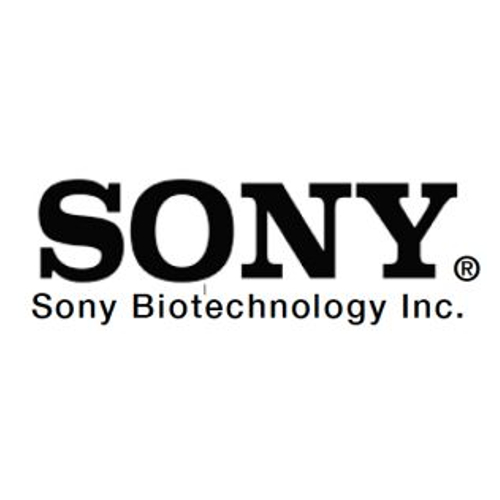CD45 Monoclonal / Brilliant Violet 421 / 30-F11
Product Details
| Description | Brilliant Violet 421 anti-mouse CD45 | |
|---|---|---|
| Conjugate | Brilliant Violet 421 | |
| Clone | 30-F11 | |
| Target Species | Mouse | |
| Applications | FC | |
| Supplier | Sony | |
| Catalog # | Sign in to view product details, citations, and spectra | |
| Size | ||
| Price | ||
| Antigen | ||
| Host | ||
| Isotype |
About CD45
The protein encoded by this gene is a member of the protein tyrosine phosphatase (PTP) family. PTPs are known to be signaling molecules that regulate a variety of cellular processes including cell growth, differentiation, mitosis, and oncogenic transformation. This PTP contains an extracellular domain, a single transmembrane segment and two tandem intracytoplasmic catalytic domains, and thus is classified as a receptor type PTP. This PTP has been shown to be an essential regulator of T- and B-cell antigen receptor signaling. It functions through either direct interaction with components of the antigen receptor complexes, or by activating various Src family kinases required for the antigen receptor signaling. This PTP also suppresses JAK kinases, and thus functions as a regulator of cytokine receptor signaling. Alternatively spliced transcripts variants of this gene, which encode distinct isoforms, have been reported. [provided by RefSeq, Jun 2012]
The protein encoded by this gene is a member of the protein tyrosine phosphatase (PTP) family. PTPs are known to be signaling molecules that regulate a variety of cellular processes including cell growth, differentiation, mitosis, and oncogenic transformation. This PTP contains an extracellular domain, a single transmembrane segment and two tandem intracytoplasmic catalytic domains, and thus is classified as a receptor type PTP. This PTP has been shown to be an essential regulator of T- and B-cell antigen receptor signaling. It functions through either direct interaction with components of the antigen receptor complexes, or by activating various Src family kinases required for the antigen receptor signaling. This PTP also suppresses JAK kinases, and thus functions as a regulator of cytokine receptor signaling. Alternatively spliced transcripts variants of this gene, which encode distinct isoforms, have been reported. [provided by RefSeq, Jun 2012]
About Brilliant Violet 421
Brilliant™ Violet 421 (BV421) is a Violet-emitting non-tandem polymer fluorophore that can be excited by the 405 nm Violet laser and collected using a 450/50 bandpass filter. BV421 has an excitation peak at 405 nm and an emission peak at 421 nm, and is spectrally similar to Alexa Fluor™ 405 and Cascade Blue. Other dyes that are considered similar include SuperNova V428 (Beckman Coulter), StarBright Violet 440 (Bio-Rad) and SuperBright 436 (Thermo Fisher). BV421 is very bright and is most commonly used for flow cytometry. Its photostablity, fixation stablity, and non-toxicity properties also make BV421 useful for cell sorting and live cell Fluorescence Microscopy applications. This dye is part of the Brilliant™ Violet dye line of fluorescent polymers. Brilliant™ Violet 421 polymer is employed as the donor molecule in a series of tandem dyes with acceptor molecules emitting at various points across the visible light spectrum. The Brilliant™ Violet dyes are a superior alternative to QDot nanocrystals and similar to SuperNova dye from Beckman Coulter and StarBright dyes from Bio-Rad.
Brilliant™ Violet 421 (BV421) is a Violet-emitting non-tandem polymer fluorophore that can be excited by the 405 nm Violet laser and collected using a 450/50 bandpass filter. BV421 has an excitation peak at 405 nm and an emission peak at 421 nm, and is spectrally similar to Alexa Fluor™ 405 and Cascade Blue. Other dyes that are considered similar include SuperNova V428 (Beckman Coulter), StarBright Violet 440 (Bio-Rad) and SuperBright 436 (Thermo Fisher). BV421 is very bright and is most commonly used for flow cytometry. Its photostablity, fixation stablity, and non-toxicity properties also make BV421 useful for cell sorting and live cell Fluorescence Microscopy applications. This dye is part of the Brilliant™ Violet dye line of fluorescent polymers. Brilliant™ Violet 421 polymer is employed as the donor molecule in a series of tandem dyes with acceptor molecules emitting at various points across the visible light spectrum. The Brilliant™ Violet dyes are a superior alternative to QDot nanocrystals and similar to SuperNova dye from Beckman Coulter and StarBright dyes from Bio-Rad.
Experiment Design Tools
Panel Builders
Looking to design a Microscopy or Flow Cytometry experiment?
Validation References
Reviews & Ratings
| Reviews |
|---|
Looking for more options?
5460 CD45 antibodies from over 61 suppliers available with over 224 conjugates.





